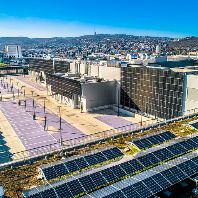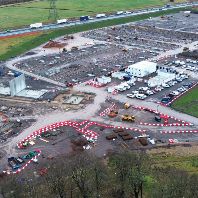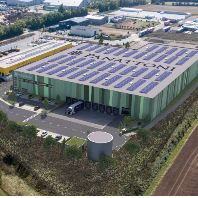Performance in the non-listed property market saw a turning point in 2009, according to the results of the INREV Index. In local currencies, the INREV Index returned -7.8% in 2009 compared to -19.8% in 2008. "The negative result for 2009 reflects the challenging year the non-listed real estate sector experienced as it started its recovery from the impact of the dramatic falls in capital values," said Michael Morgenroth, INREV Management Board member and Management Board Member of Gothaer Asset Management AG.
"The climb in performance in 2009 was led by the UK, which has been a more volatile market during this downturn. Its performance fell more dramatically than that of the Continent. We now see from these figures that it has also responded more positively to improving conditions." The UK returned -6.4% in 2009 compared to -33.2% in 2008.
For the Continent, there was also an improvement for 2009 with returns of -8.4% compared to -9.2% in 2008. This result shows that the downturn did not hit the Continent with the same severity but the recovery is also at a slower pace.
Total returns comprised a 3.3% income return and capital growth of -11.1% in local currencies. Income return has remained stable for the last two years with the fall in capital growth being the main driver for the decline in performance.
There was a clear difference in returns by style. Core funds returned -5.9% and value added funds returned -14.3%. "The negative impact of the different levels of gearing used by core and value added funds is still having a clear impact on the performance of the funds. This is also supported by the fact that funds with a gearing level lower than 50% of GAV performed significantly better than those with more than 50%," said Casper Hesp, Research Manager, INREV. Funds with gearing below 50% GAV returned -2.8% while those with more than 50% returned -17.2%.
The INREV Index 2009 also shows strong variations in country performance across Europe, as seen by the table below. Multi-country funds returned -11.4%, which is below the headline return of -7.8%. An important factor behind this difference is the exposure of these funds Southern European and other small European economies such as Central and Eastern Europe. In these countries capital values fell harder than in the rest of Europe.
Given the number of funds with a multi-country strategy included in the index, it is this group of 104 funds that has been a main driver for total returns in Continental Europe.
Fund geographic focus
Portugal
-14.1%
5 funds
Netherlands
-4.2%
20 funds
Italy
1.8%
20 funds
Germany
-1.3%
20 funds
France
-8.6%
14 funds
Finland
-14.0%
5 funds
UK
-6.4%
62 funds
Multi-Country
-11.4%
104 funds
____________________
The 2009 Index represents INREV's largest ever sample with 258 funds representing 132.7 billion of total gross assets. This is around 75% of the total institutional non-listed universe.
Andrea Carpenter, Interim CEO, INREV said: "The quality of coverage now means the INREV Index is a useful tool for investors and fund managers for performance evaluation. As we have developed this tool we have made sure that the amount of information available to members has grown. We have continued to support this with the recent launch of the Index Analysis tool which allows INREV members to create tailor-made indices from the INREV Index sample."
The INREV Index measures annual net asset value-based performance for non-listed real estate funds investing 90% or more in Europe. It focuses on core and value added institutional vehicles.
The Index is currently not frozen so is not recommended for benchmarking. INREV plans to freeze the Index in the third quarter of 2010.
Source: Madano















